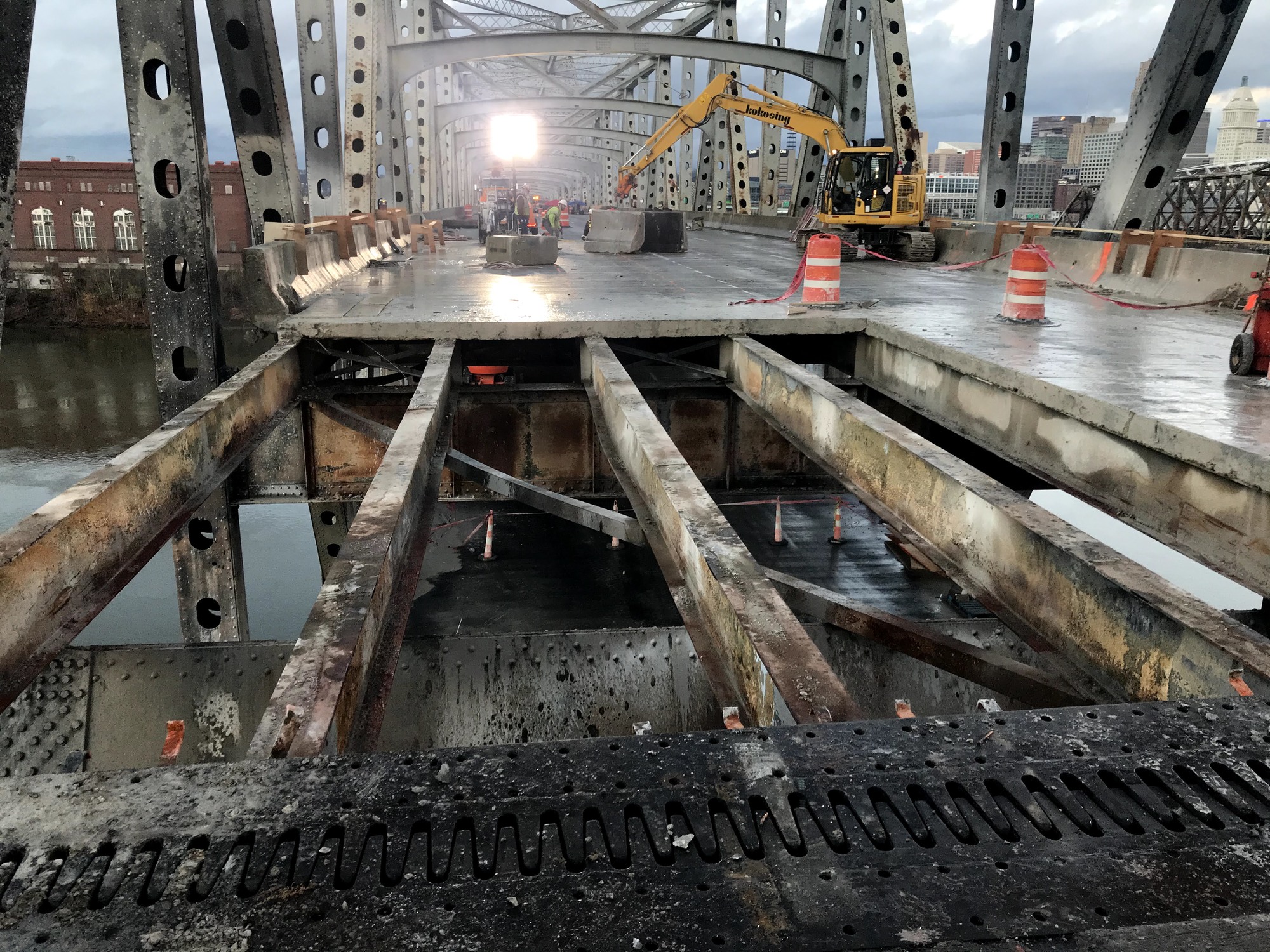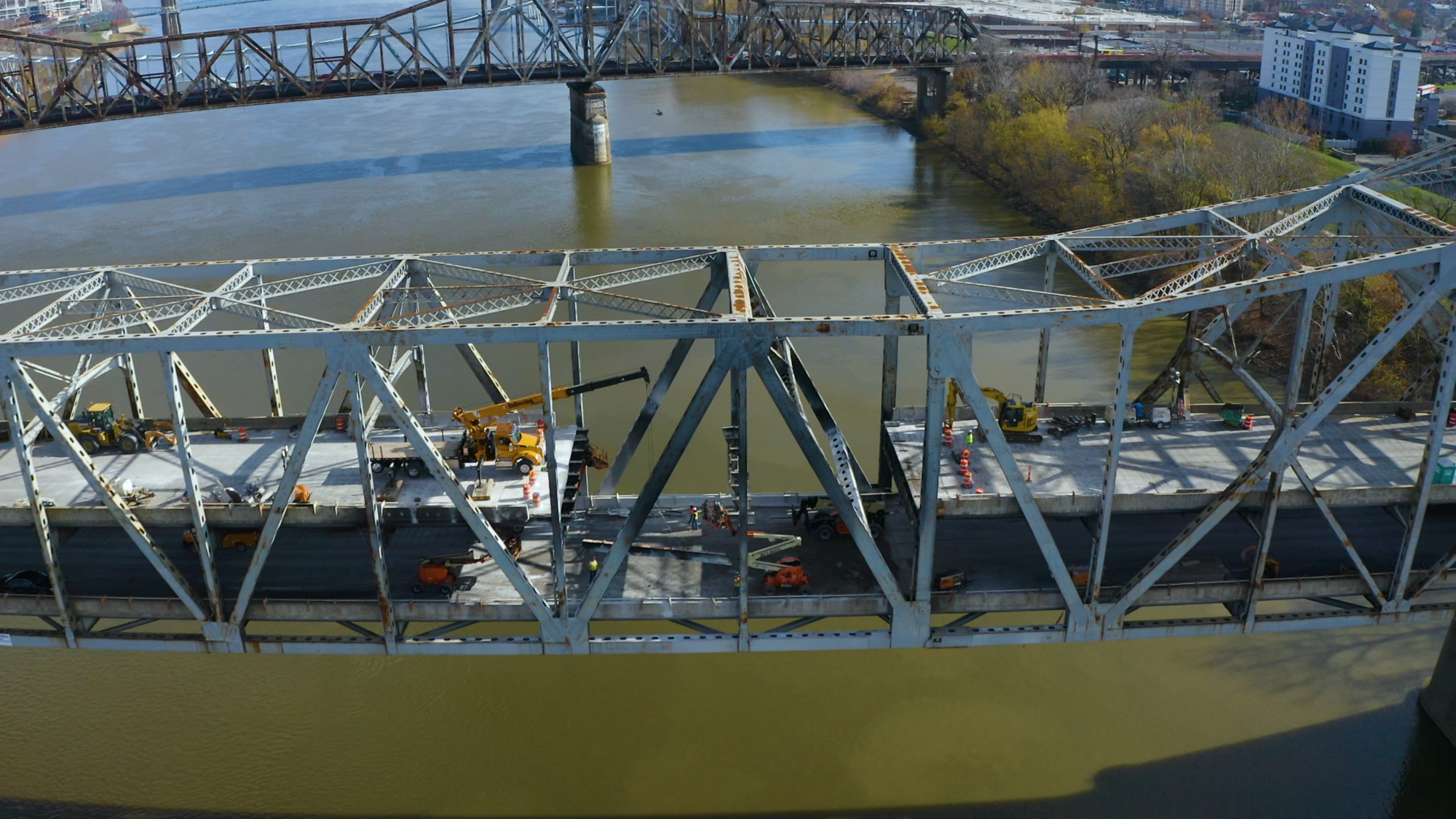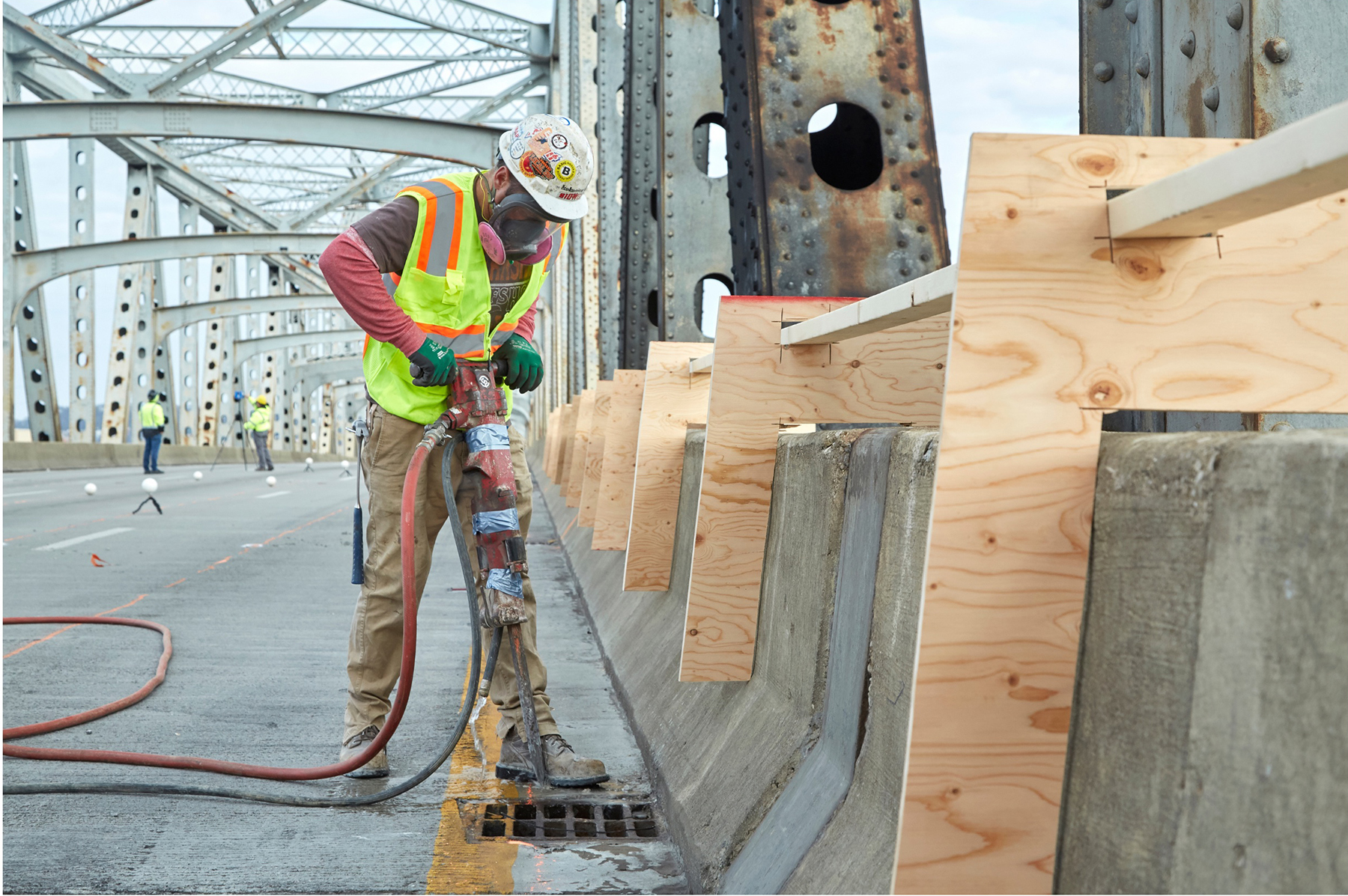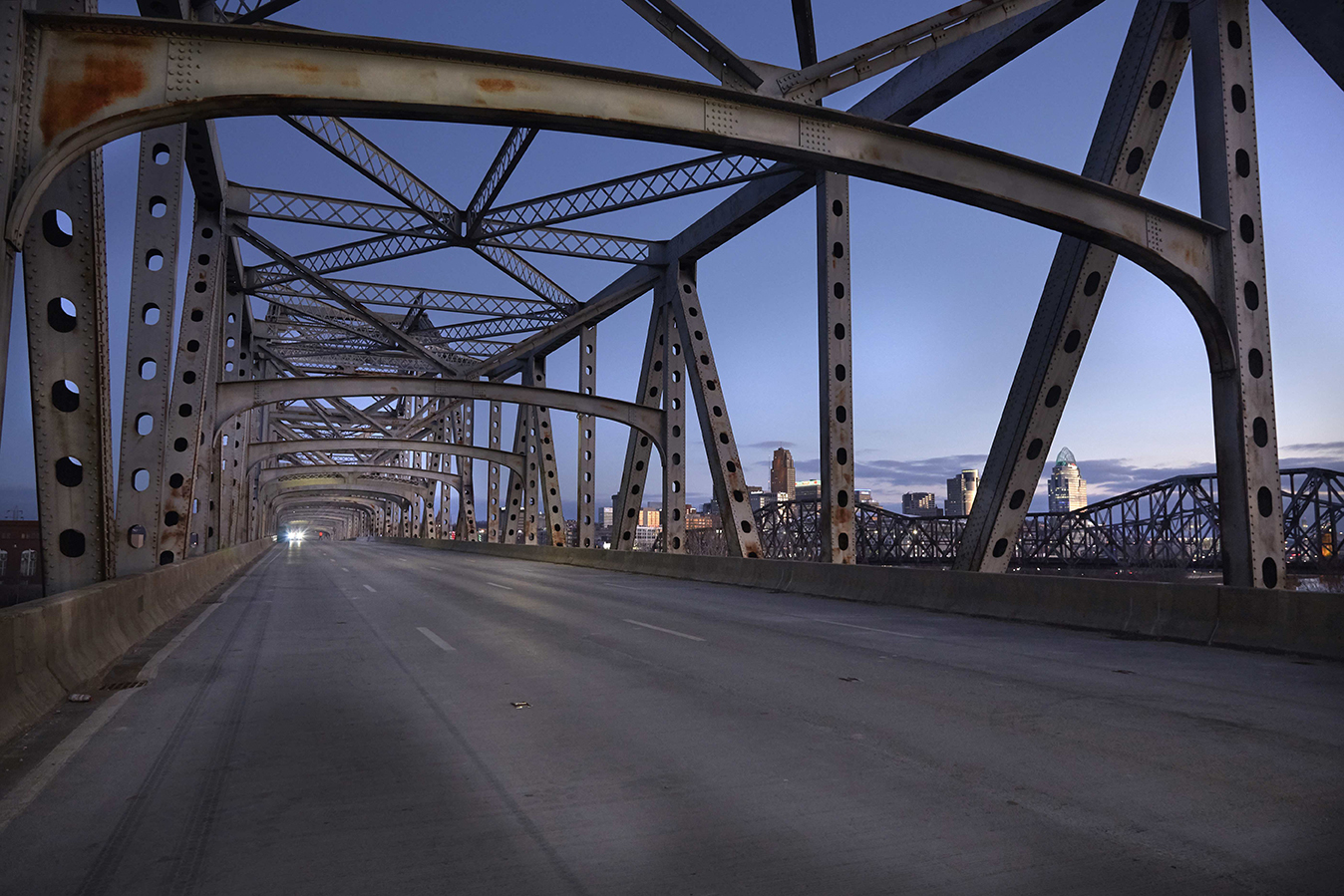On Nov. 11, 2020, a fiery crash closed the Brent Spence Bridge, a double-decker cantilever truss bridge that spans the Ohio River, connecting Ohio and Kentucky. On the lower northbound deck of the bridge, a truck carrying potassium hydroxide, a hazardous material, crashed into a jackknifed truck at 2:45 a.m., causing the fire. After a six-week closure for repairs, the bridge reopened a day ahead of schedule, on Dec. 22.
Originally designed to accommodate 80,000 vehicles a day, the Brent Spence Bridge typically handles twice that, with approximately 160,000 vehicles navigating the corridor daily. The bridge carries interstates 71 and 75 across the Ohio River and is an important conduit for commercial traffic.

Built in 1963, the bridge was originally three lanes in each direction and was restriped in the mid-1980s to accommodate four 11 ft wide lanes each in each direction. That change came at the expense of the bridge’s shoulders, which were narrowed to just 1 ft wide. Because of this, “from a maintenance standpoint, you can’t do anything without closing a lane, and that causes traffic challenges,” says Bob Yeager, P.E., chief district engineer for Kentucky Transportation Cabinet’s District 6 office.
“When I got the call (about the accident) at 3:15 in the morning, my first thought was, ‘What am I going to do with 160,000 cars?’” Yeager recalls.
Logistical and engineering challenges
The fire on the lower deck of the double-decker bridge also damaged the bridge’s upper level. “That would not have been a concern on a standard bridge,” Yeager says.
Because traffic on the top deck flowed from Ohio to Covington, Kentucky, the Kentucky Transportation Cabinet had to partner with Ohio to ensure smooth work. Complicating matters, Ohio is in a different federal region — it receives federal guidance from Chicago — while Kentucky receives its guidance from Atlanta.
An added complication was the water under the bridge. “Because the bridge spans the river, the Coast Guard had to be involved. Nothing could be dropped into the water (during the repair work), so everything had to be encapsulated and captured,” Yeager says.
Despite these challenges, the specific location of the accident on the bridge turned out to be fortuitous, Yeager says. “Had it been a little to the left or the right, it would have compromised structural integrity,” he says.

The fire burned for about three hours, damaging the stringer beams and pulling the pavement away from the beams. The fire buckled the pavement about 3 in. deep. Despite this, the damage was confined to a specific area and only affected the beams holding up the deck. A team of over 20 structural engineers, including members from both states and the Federal Highway Administration and pressed into service right away, determined the overall structural integrity of the bridge was unaffected by this damage.
The repairs
The repair work turned out to be a lesson in efficient project management, says Jim Gray, Kentucky Transportation Cabinet secretary. The project involved three parts: the traffic diversion and management, public communications, and the actual repairs.
The transportation cabinet, in concert with the Ohio Department of Transportation, attended to traffic management, reviewing detour plans frequently and ensuring they were making the most efficient use of available roads. One of the challenges was that smartphone apps such as Waze were directing 18-wheeler trucks onto smaller roads where they did not belong.
Constant communication with the public was key, Gray says. Frequent updates were pushed out through a dedicated website and social media. “That relieved the anxiety of the public as to whether or not the government could get this project done on a tight schedule,” Gray says. “It arguably also increased the public’s patience.”

Ironically, the pandemic helped teams move faster because they did not have to always meet in person, instead working with videoconferencing solutions.
Kokosing Construction Co., headquartered in Westerville, Ohio, won the contract for repairs. The company worked with Yeager and Cory Wilson, P.E., the Kentucky Transportation Cabinet construction project manager.
Final repairs included removing about 160 ft of pavement, replacing 16 stringer beams, replacing the pavement, and redoing the barrier walls on either side. On the lower deck, the team had to mill out about 3 to 3.5 in. of the deck before replacing it.
The Brent Spence Bridge is notorious for its accident rate, which is three to five times higher than along any other stretch of interstate in Ohio or Kentucky. The National Bridge Inventory, maintained by the Federal Highway Administration, lists the bridge as "functionally obsolete," primarily because it continues to accommodate more capacity than it was originally designed for.

While the Kentucky Transportation Cabinet took advantage of the lack of traffic during the six-week window to tackle outstanding maintenance work, no larger rehabilitation projects took place. As part of the maintenance work, the team removed and installed a drainage system, installed new overhead lights, and cleaned signs.
While Elaine Chao, the then-secretary of the U.S. Department of Transportation, made $12 million of quick release emergency funds available for the repairs, the final estimated cost came to less than half that, approximately $5 million.




